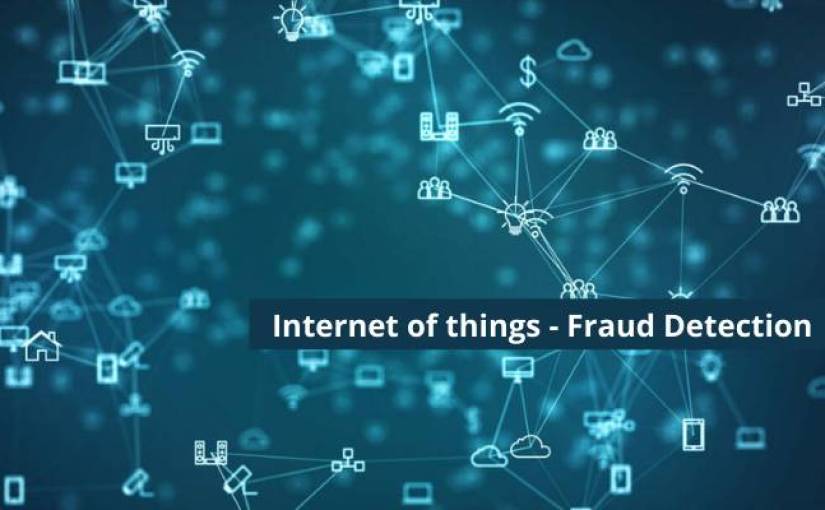Imagine losing $1.5 million to fraud — that is, in fact, what an average financial fraud costs a company. In addition, the constant threat of vulnerabilities in cybersecurity is being exploited by unscrupulous hackers, which is terrifying not just for individuals but also for businesses. For companies to function smoothly without the risk of potential fraud, a robust, pre-emptive, and future-ready combat system is non-negotiable.
Changing Fraud Detection
With the dawn of the digital era, things have changed rapidly. But, unfortunately, while technological advancements have transformed the world around us in more ways than one, the other side of the coin is becoming uglier by the day.
For example, business-related frauds have increased alarmingly, but the nature of these cases has demonstrated how smart technology can be susceptible to large-scale cyberattacks.
The IoT Connected World

As the Internet of Things (IoT) becomes a reality, we are now living in a more connected and integrated world than ever before. While not every industry has embraced IoT wholeheartedly, most have and are now grappling with various risks associated with potential fraud. In a bid to rapidly achieve their digital transformation goals, the security aspect has been slightly ignored by many businesses.
While the IoT infrastructure offers a host of convenience, collaboration, and productivity benefits, it poses grave security threats, including direct attacks on IoT devices and IoT devices–generated data privacy issues.
Even the most secure of IoT devices, networks, and systems are susceptible to malicious activity. Here are some examples of looming cybersecurity threats.
1. DDoS attacks
A distribution denial of service or a DDoS attack involves flooding a server with redundant requests that overload it, taking it offline due to its inability to accommodate these requests.
2. Data breaches via IoT devices
Sensitive information about the company or employees may easily get leaked this way. Getting your hands on a publicly accessible device and breaching these IoT devices is not difficult for hackers.
3. Poor encryption
Communication channels are perhaps most vulnerable to cyberattacks. Poorly encrypted data shared over private or public networks can be stolen or tampered with. For IoT networks, this spells d-a-n-g-e-r because it gives hackers the doorway to breach company systems and networks.
Leaking of Sensitive Data
DNS poisoning, diverting, and re-routing communication away from a legitimate application server, and leakage of sensitive data without the data owner’s knowledge or permission are some of the other significant challenges in this area.
And, while bad actors are finding novel ways to breach IoT devices and systems, fraud management teams are still using legacy systems and processes to manage or detect fraud.
According to a leading BPM organization, businesses succumb to more fraud cases than they anticipate because:
- They take a siloed approach to fraud management — this never works when teams and individuals work across different regions and parts of the world.
- Instead of taking a centralized approach to fraud prevention and management, the approach is spread across business processes, functions, and locations.
- Most of the analyses are based on human knowledge, past experiences, single rule-based analysis, and intuition rather than standardized methodologies, best practices, and systems.
Artificial intelligence (AI) and machine learning (ML) have injected a dose of optimism, though, delivering a much-needed boost to the fraud detection and prevention market under the IoT purview.
Fortifying the IoT Environment
As companies continue to pour more money into fortifying the IoT environment, it is natural that technologies like AI and ML will be employed to protect data and devices and prevent attacks. With AI-enabled solutions, it is possible to safeguard your precious assets and reduce the risk of fraud through continuous monitoring and analytics.
Apart from real-time tracking of big data and transactions, AI algorithms can also use predictive analytics to help businesses understand past events and forecast similar potential threats that might arise in the future.
AI in IoT applications can also enable automated decision-making. For example, machine learning algorithms constantly monitor all the traffic that flows through IoT devices, providing you with a clear picture of what a normal IoT cycle or behavior pattern looks like. This can help you detect any suspicious activity and identify such threats before they manifest into a bigger problem.
Enterprises Will Want to Learn from Past Mistakes
For enterprises wanting to improve their IoT ecosystem and detect fraud early, it is critical that they learn from the mistakes or failures of others. In addition, it is essential that you understand why your apps, devices, or IoT networks are weak and susceptible to fraud.
Identifying these loopholes and conducting regular IoT security audits is the key to ensuring that your IoT traffic is not falling prey to fraudulent actors.
Article Image Credit: Provided by the author; Thank you!
Top Image Credit: Cottonbro; Pexels; Thank you!
The post How IoT is Changing Fraud Detection? appeared first on ReadWrite.


Comentarios recientes